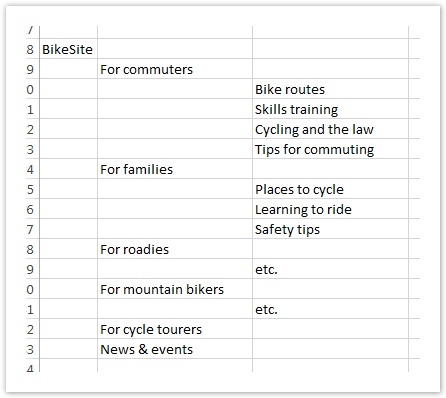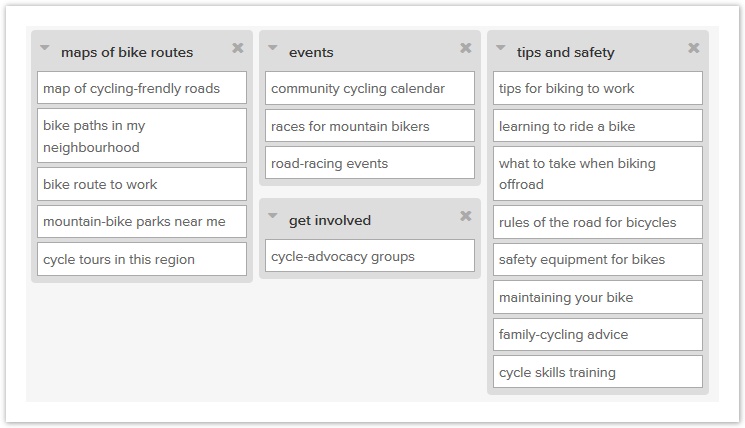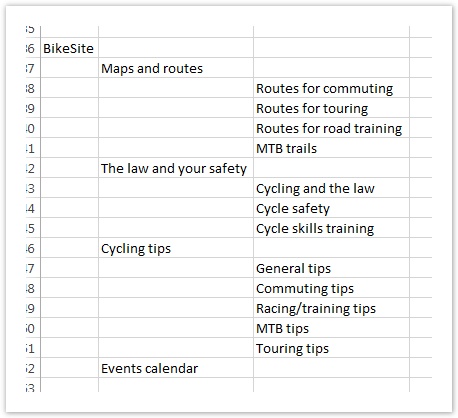...
Having studied the content and talked to the site’s internal stakeholders, Tom thinks a lot, then opens a new spreadsheet and creates a text tree of possible headings and subheadings, based on different audiences:
When he reviews his tree ideas with others on the team, most of them like the audience-based scheme. They make some comments and suggestions, and he accordingly makes a few revisions before delivering the design.
...
She has some ideas on how to structure the content, but she also knows that she is not the target audience, so she decides that she needs to get some user input to help generate structure ideas. She runs an open card sort online using some representative content, and discovers that most users actually organize the cards according to activity, not according to audience. Her initial hunch was wrong, but it’s easy to change direction this early in the game.
...
She then opens a new spreadsheet and creates a text tree of possible headings and subheadings, based on the various types of activities topics that the site offers. (Tom also did this.)
She then creates a second tree that is also activities-based, but uses a different organizing method for the next level down (based on another finding she picked up from the card sort).
...
Like Tom, Maria checks her ideas with the project team and revises some terminology accordingly. Most of her team prefers her first tree to her second, which confirms her own preference.
:
Instead of finalizing the structure then and there, she wants some proof that the first tree is the best, and to see if anything else needs revising from a user’s point of view. a topic-based tree is better than her initial idea of an audience-based tree. So she creates an audience-based tree as well, and decides to test them against each other. (The project sponsor happens to prefer the audience scheme, so this is an additional reason to get objective data on both before deciding.)
She takes a week to run side-by-side two tree tests (one for each tree), and gets about 100 people to try out both each tree ideas:
- ss of tree testing participant session and pie-tree results for that task
...



